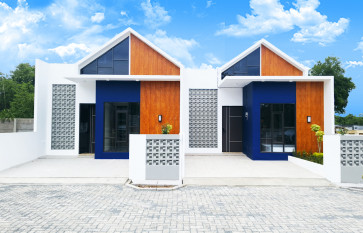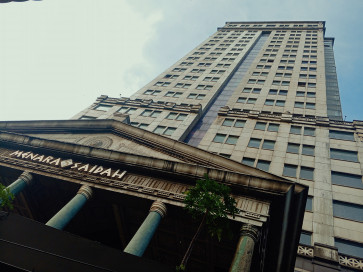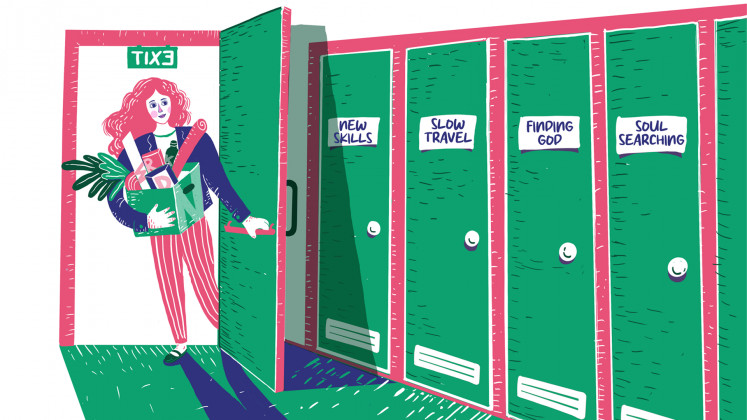During a recent trip to Jakarta, I was taken aback by Gambir train station. Instead of scanning a physical ticket, I checked in using facial recognition.
Talk about a futuristic welcome, but I couldn’t help feeling a bit like I’d stepped into a sci-fi thriller.
I must have agreed to digitize my face when I registered months ago, but by the time I used the train, I had already learned that there are advanced algorithms that do more than just recognize faces. They can now assess blood pressure, stress levels, age and even potential heart disease risks. That triggered surveillance nightmares the likes of which I’d only read about elsewhere.
“It’s worth questioning whether a train station needs facial recognition technology,” says Hendricus Andy Simarmata, president of the Indonesian Association of Urban and Regional Planners.
“Law enforcement or international airports using it makes sense, but domestic airports don’t use facial recognition, and train stations already have CCTV for security. Is facial recognition really necessary here?”
Ranked 103rd globally by the Institute of Management and Development, Jakarta is a relatively new “smart city.” Yet we can already see how technology is reshaping daily life in this megacity, from a more connected public transit system and a growing cashless economy to CCTV networks monitoring traffic, all for the promise of a frictionless future. That does sound like an urban dream.

Thank you!
For signing up to our newsletter.
Please check your email for your newsletter subscription.
Jakarta isn’t the only place going high-tech. The government has big ambitions, planning to develop 100 smart cities by 2045. The new capital, Nusantara, is also designed to be a “city of tomorrow” with features like autonomous driving systems, smart waste management and a digital identity platform.
These futuristic projects aren’t just for show; they’re part of an urgent response to rapid urbanization, with 70 percent of Indonesia’s population expected to live in big cities by 2045.
The rise of smart cities
The concept of a smart city gained traction in the 1990s alongside the rise of the internet, promising more connected and efficient urban living. Today’s technology, from the Internet of Things (IoT) to 5G networks, has finally made these ideas achievable.
In smart cities, data-driven systems monitor waste, traffic and pollution, helping cities reduce congestion, conserve energy and improve public services. For big cities struggling with population growth, mounting waste and endless traffic jams, the appeal of a system that keeps everything running smoothly is almost irresistible.
Smart cities aim to offload essential tasks to technology, easing public operations and providing peace of mind.
But ironically, the more technology we use, the more we as citizens need to stay vigilant about how it’s used and who benefits.
High-tech fixes
The appeal of high-tech solutions is their promise of magically easy fixes, many of which are described as “one-stop solutions.” But technology alone can’t solve every problem; sometimes, it only highlights what’s missing.
Take internet access, a basic requirement in any smart city. While it’s widely available in Jakarta, it remains a premium expense for many.
“Monthly internet costs can eat up a big part of people’s income,” Hendricus notes.
Yet internet access is now a near-necessity for everyday tasks, from booking doctor’s appointments and work meetings to ordering transportation or paying bills.
“Imagine if a child has to use video conferencing for school, that alone can be a huge cost,” he adds.
The government’s ambitious plan for a single app to streamline all public services is meant to make life easier. But as more services go digital, those who struggle with internet costs or skills may be left behind, facing new barriers instead of fewer.
The elderly, too, often fall through the digital cracks. As non-digital natives, they tend to adapt slowly to new systems like e-payments or transit apps. This is especially ironic, given that seniors are some of the biggest users of public transportation.
“Most digital literacy programs target youth,” says Hendricus, “but it’s the elderly who actually need this training the most.”
So, while technology can be part of the solution, it’s just one piece of the puzzle.
“If you want us to make an app, that’s easy,” says Suhono Harsono Supangkat, director of the Smart Cities and Communities Innovation Center at Bandung Institute of Technology.
“The real challenge is making it impactful.”
The missing ingredient? The public
Bridging technology and social impact requires public participation. While many “smart city” initiatives aim to streamline urban life, they often focus more on flashy tech than on people’s actual needs. Who’s actually benefiting from these changes?
“We’ve seen many initiatives like bike-sharing, smart parking and command centers fail because they don’t incorporate public participation, they don’t consider the public’s digital literacy and they lack strong management,” says Suhono.
“They’re often launched as tech showcases without evaluating their real impact.”
This disconnect highlights the need for true citizen engagement in smart city planning.
“Smart cities start with citizens who can identify local issues, work together on solutions and actively monitor policies,” says Dian Tri Irawaty, program director at the Rujak Center for Urban Studies.
Learning from smarter cities
Barcelona, in Spain, a leader in engaging citizens in its smart initiatives, uses a platform called Decidim. Launched in 2016, Decidim allows residents to submit proposals, organize public meetings and vote on budget spending. Within two months, the platform had over 10,000 proposals and 410 public meetings.
Jakarta has its own version, called Qlue, launched in 2014 to let residents report issues like potholes and broken streetlights. The local government uses it to gather feedback in real-time, but there’s a downside.
“People don’t know what happens after they submit a report,” Dian notes.
Listening to the public is one thing, but engaging in ongoing dialogue is another.
“If people sense the government isn’t interested in constructive discussion, why would they bother speaking up?” Dian asks.
Even NGOs and think tanks struggle to engage meaningfully.
“We attend public hearings and give feedback, but there’s rarely follow-up,” says Hafiz Noer, head of research at the Center for Digital Society, University of Gadjah Mada.
“Then, regulations are suddenly passed without further input.”
Public involvement is critical, especially as data forms the backbone of smart cities.
The power and perils of data
“Data allows the government to create programs,” says Hafiz. “[With centralized data], they can easily see the demographics at a certain location, how many women and men there are, their age, their education. And they can decide what kind of public service or social security they should introduce based on that information. That’s what a smart city is.”
But large-scale data collection can feel more like Big Brother than smart living. Some call this trend a “digital dictatorship,” where citizens may feel constantly monitored.
“It has the potential to enable the government to watch our every move,” says Hafiz.
That was certainly my fear when I checked in at the train station using facial recognition. While facial data uses like this are still rare in Indonesia, who’s to say they won’t expand, and what then?
“People have the right to know how their information is used,” Hendricus says.
But with frequent data breaches, including hacks that have exposed citizens’ ID numbers and personal information, it’s hard not to worry.
These issues make the proper implementation of Indonesia’s Personal Data Protection Law, now past its two-year grace period, increasingly urgent.
Remaining human-centric
What’s clear is that technology alone won’t guarantee prosperity and equality.
Jules Verne warned as much in the 19th century, predicting that an obsession with technology would strip cities of their culture, art and humanity.
In his novel Paris in the Twentieth Century, he imagines a city with all the latest high-tech innovations but no soul, no poetry, music or art.
Without public involvement, smart cities risk becoming lifeless hubs.
“We let technology into our lives,” Hafiz says, “but we also have to serve as its watchdog.”
Michelle Anindya is a writer and journalist. From her home in Bali, she writes about anything from coffee to tech.























